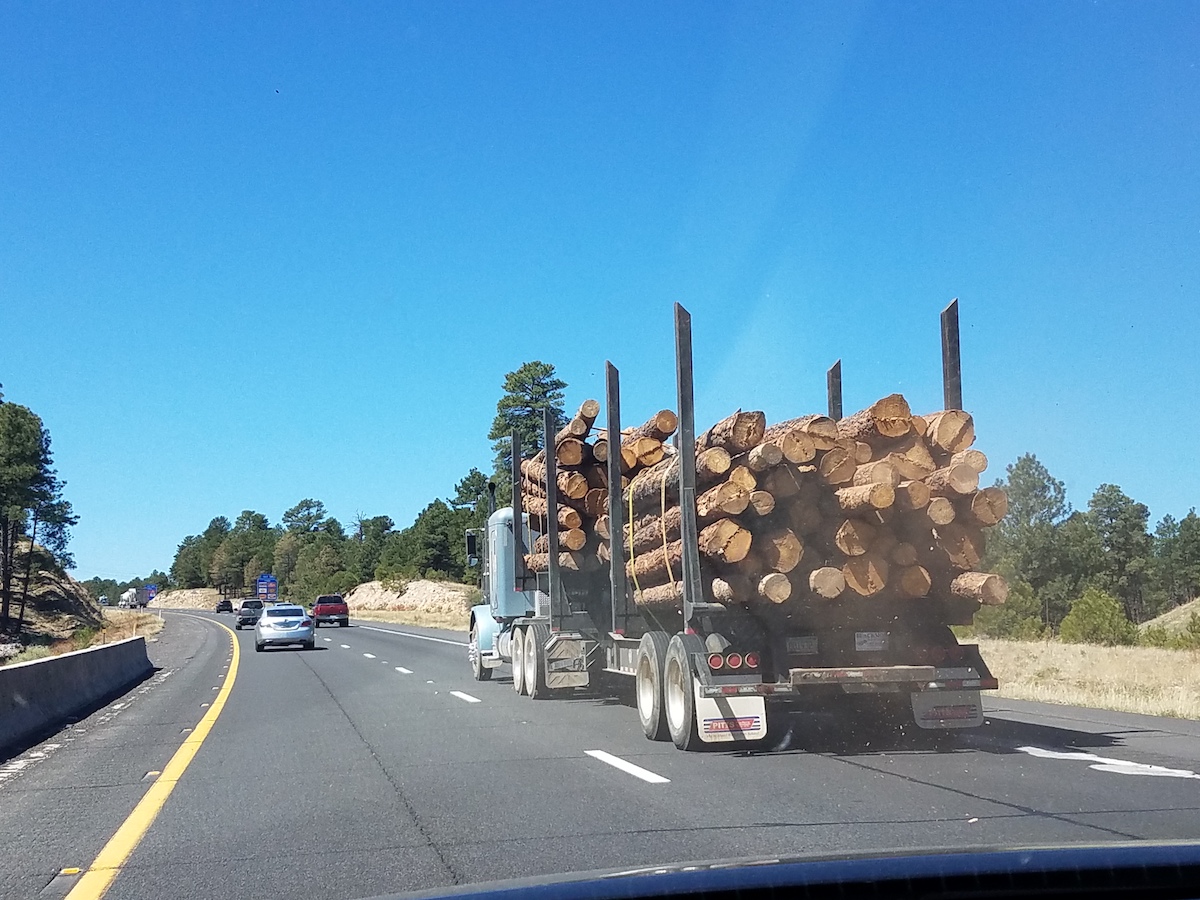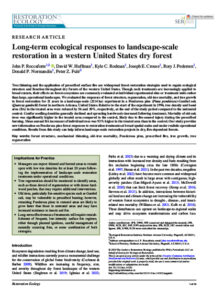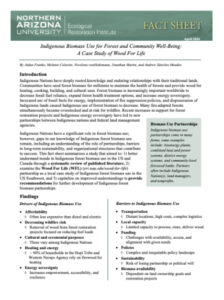Forest Restoration and Fuel Reduction Thinning Operations
There are a wide range of forest harvesting systems and equipment available for implementing forest restoration and fuel reduction thinning treatments. However, the selection of machines best fit for the job and custom-tailored harvest practices is key to minimize operational costs and maximize the use of woody biomass, while minimizing any potential environmental impacts. The ERI research teams are interested in evaluating steep-slope thinning operations using cable-assist cut-to-length, helicopter yarding, and biomass recovery operations for production of bioenergy and biobased products.

Long-term ecological responses to landscape-scale restoration in a western United States dry forest
Tree thinning and prescribed surface fire are common forest restoration strategies in the dry forests of the western United States. These treatments are often assessed at small scales rather than across large areas. This study evaluated forest structure, regeneration, old-tree mortality, and tree growth over 21 years in a large (2114 ha) Ponderosa pine-Gambel oak forest in northern Arizona. By the end of the study, tree density and basal area in the treated area were reduced by 56% and 38%, respectively, compared to the untreated control. Conifer seedling densities generally declined while hardwood sprouting increased post-treatment. Old oak tree mortality was higher in the treated area, likely due to fire injury. The mean annual basal area increment of individual trees was 93% higher in the treated area than in the control. These findings offer valuable insights for large-scale restoration efforts in dry, fire-dependent forests.
Return on investments in restoration and fuel treatments in frequent-fire forests of the American west: A meta-analysis
Arid forests in the American West are overly dense and need fuel reduction and fire regime restoration. Forest restoration efforts, such as thinning and prescribed burning, aim to reduce wildfire risks. Despite their importance, the cost-effectiveness of these programs is not well understood. This study conducted a meta-analysis of 120 observations from 16 studies over the past two decades to evaluate the benefits and costs of forest restoration and fuel treatments. Results showed significant variation in benefits, from enhanced ecosystem services to avoided wildfire costs. In high-value, at-risk watersheds, every dollar invested in restoration yielded up to seven dollars in benefits, achieving a 600% return on investment.



